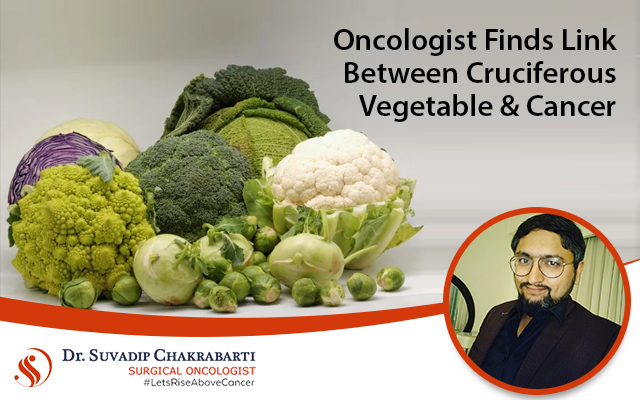Cruciferous vegetables, so named for their four-petal flowers that resemble a cross or “crucifer,” are well-known for their numerous health benefits, including their ability to fight cancer. Although broccoli is the most notable cruciferous vegetable, there are numerous others, says Dr Suvadip Chakrabarti, a cancer doctor in Kolkata.
The cruciferous vegetable family also includes Brussels sprouts, cabbage, cauliflower, turnips and dark leafy greens such as kale and collard greens. Almost all of these vegetables are high in vitamin C and K, folate, potassium, fibre and magnesium.
Cruciferous Vegetables and Cancer
The anti-cancer properties are attributed to a class of compounds known as glucosinolates, which are found in all cruciferous vegetables. Glucosinolates are broken down in the body into isothiocyanates and indoles, which are associated with decreased inflammation and a decreased risk of cancer. Traditional population-based studies have established a strong link between increased cruciferous vegetable consumption and a decreased risk of lung, colorectal, stomach, breast and prostate cancers.
Recent researches indicate that the compounds found in cruciferous vegetables “activate” genes that suppress tumours, slowing tumour growth and stimulating cancer cells to self-destruct (apoptosis). Additionally, glucosinolates may stimulate enzymes that deactivate carcinogens and inhibit the spread of cancer cells, says the oncologist in Kolkata.
Some research indicates that glucosinolates may shift active estrogen to a weaker form and help with hormone-related cancers and may confer additional benefits when combined with certain chemotherapeutic agents. Animal studies corroborate these findings, demonstrating that high-cruciferous vegetable diets inhibit cancer growth in animals.
On the other hand, human studies are inconsistent in demonstrating a link between cruciferous vegetable consumption and a decreased risk of cancer. This may imply that some people benefit from these vegetables more than others due to genetic differences in how the body processes glucosinolate compounds, says the cancer doctor in Kolkata.
Best Ways To Consume Cruciferous Vegetables
Variations in cooking and preparation methods can affect nutrient composition. To maximize the anti-cancer benefits of your diet, include a variety of cruciferous vegetables and experiment with new preparation techniques.
Selection and preparation tips provided by the cancer surgeon in Kolkata:
Inspect green leaves for wilting or yellowing
Rinse before use with cool running water
Steam, microwave, sauté, or stir-fry to preserve glucosinolates, folate and vitamin C. Boiling greens in a pot of water can significantly reduce the content of these compounds
Cook just until tender/crisp, while the greens retain their vibrant colour
Experiment with roasting in olive oil, garlic and your preferred herbs
Serve raw alongside hummus. Cool in ice water if the flavour is too strong to eat raw or steamed

